GPCR/G protein

All GPCRs share a common seven trans-membrane structure. GPCRs are associated with heterotrimeric G-proteins which are GTP-binding proteins made of alpha, beta, and gamma subunits. When a ligand binds to GPCR, it activates the attached G-protein, the GDP is replaced with GTP. The activated G-protein then dissociates into an alpha and a beta-gamma complex which activates downstream signaling pathways. These intracellular signaling pathways include cAMP/PKA, calcium/NFAT, phospholipase C, protein tyrosine kinases, MAP kinases, PI-3-kinase, nitric oxide/cGMP, Rho, and JAK/STAT.
GPCRs are one of the most important therapeutic targets for various diseases, over 30% of all modern medicinal drugs target this family. Aberrant GPCR functions are involved in pathological conditions such as neurological, immunological and hormonal disorders. A large number of GPCRs have been identified, but whose ligands are not known, are classified as orphan receptors.
-
 B6886 AlytesinSummary: Amphibian bombesin-like peptide
B6886 AlytesinSummary: Amphibian bombesin-like peptide -
 B7122 PD 176252Summary: gastrin-releasing peptide receptor (GRP-R, BB2) and neuromedin B receptor (NMB-R, BB1) antagonist
B7122 PD 176252Summary: gastrin-releasing peptide receptor (GRP-R, BB2) and neuromedin B receptor (NMB-R, BB1) antagonist -
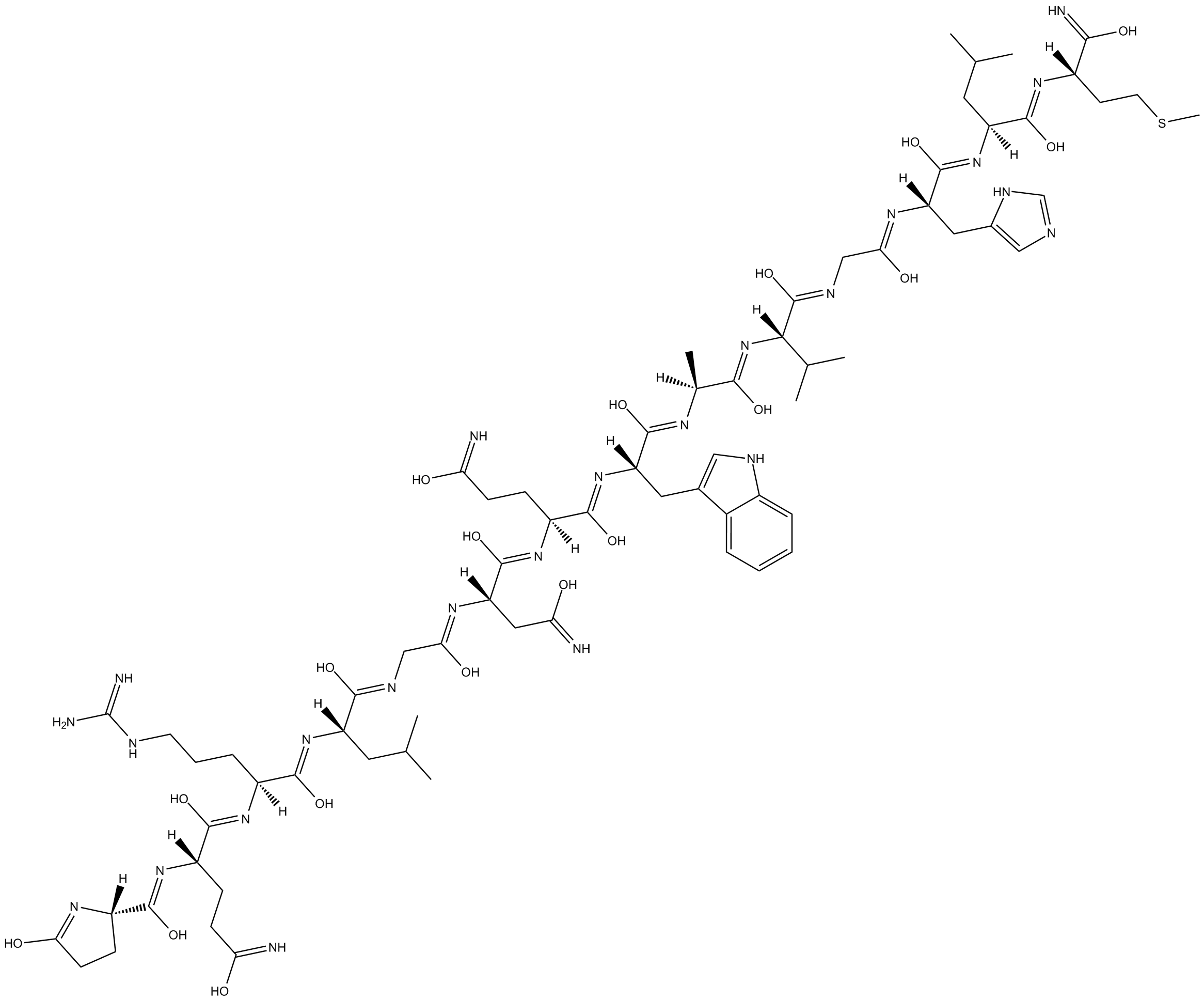 B5057 BombesinSummary: Neuropeptide with many biological effects
B5057 BombesinSummary: Neuropeptide with many biological effects -
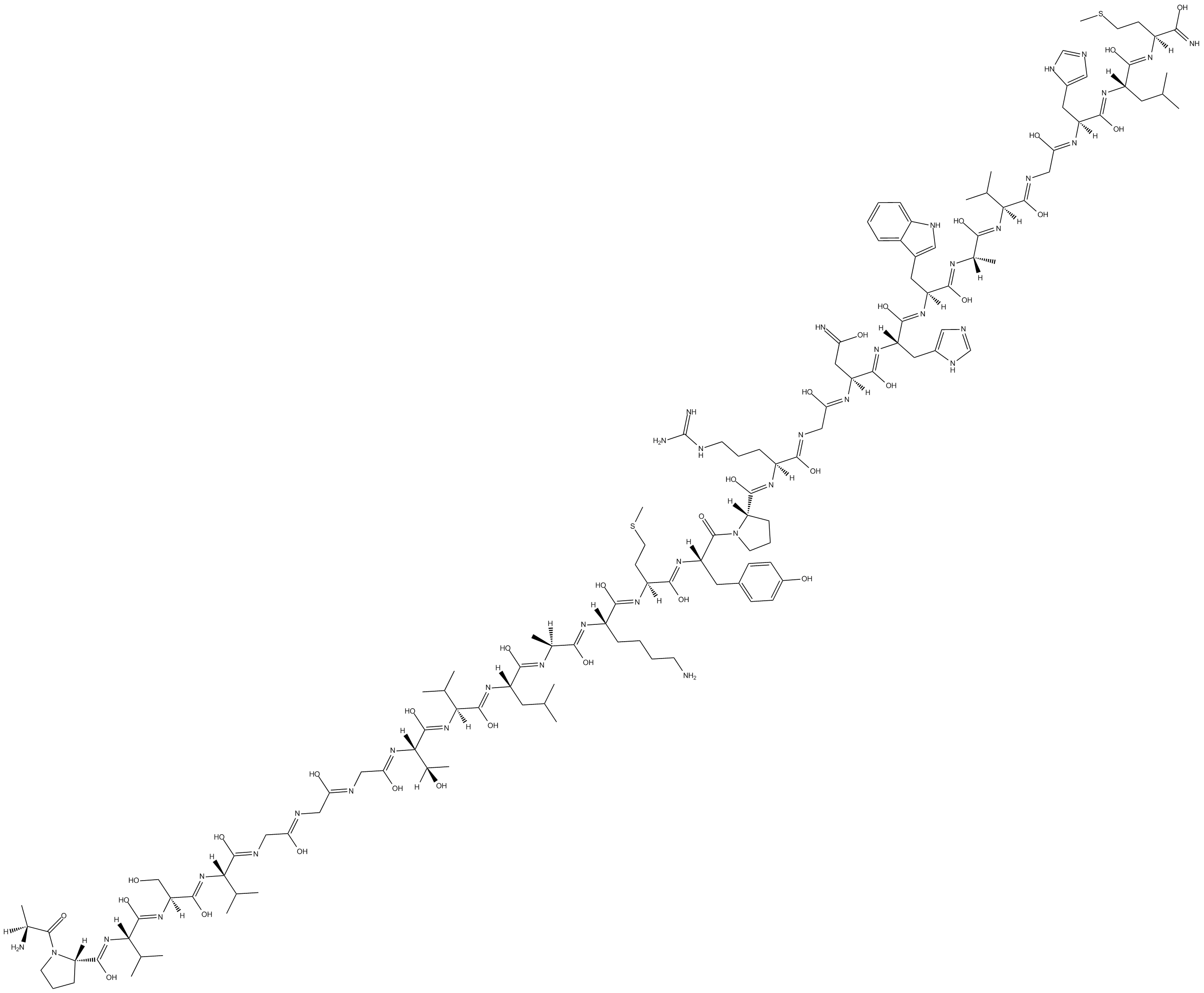 B5170 GRP (porcine)Summary: agonist for the gastrin-releasing peptide receptor (GRPR)
B5170 GRP (porcine)Summary: agonist for the gastrin-releasing peptide receptor (GRPR) -
 B5171 GRP (human)Summary: agonist for the gastrin-releasing peptide receptor (GRPR)
B5171 GRP (human)Summary: agonist for the gastrin-releasing peptide receptor (GRPR) -
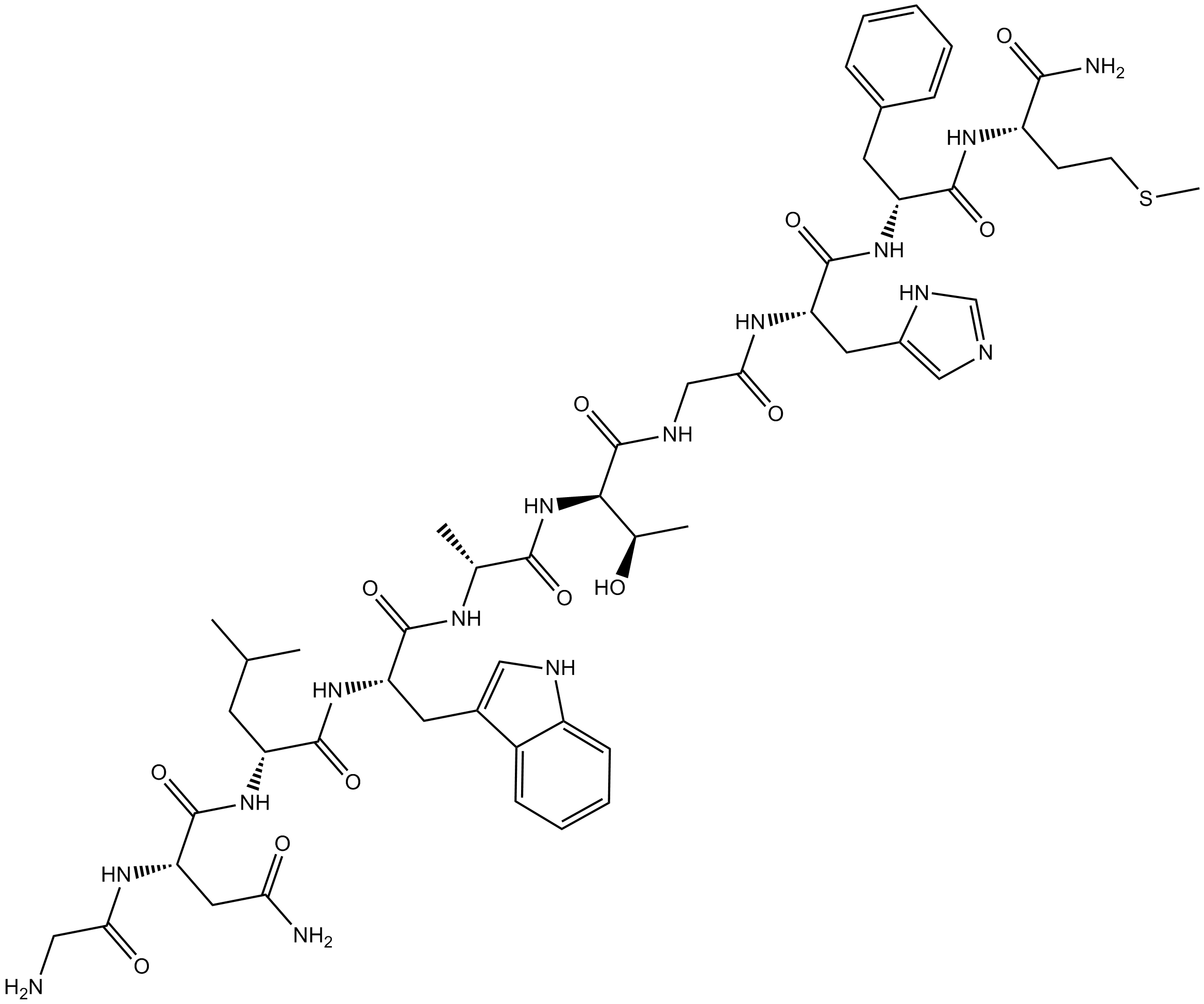 B5225 Neuromedin B (porcine)Summary: Mammalian bombesin-like peptide and endogenous ligand for the neuromedin B receptor
B5225 Neuromedin B (porcine)Summary: Mammalian bombesin-like peptide and endogenous ligand for the neuromedin B receptor -
![[D-Phe12]-Bombesin](/pub/media/prod_images/b/5/b5228.png) B5228 [D-Phe12]-BombesinSummary: Bombesin receptor antagonist
B5228 [D-Phe12]-BombesinSummary: Bombesin receptor antagonist -
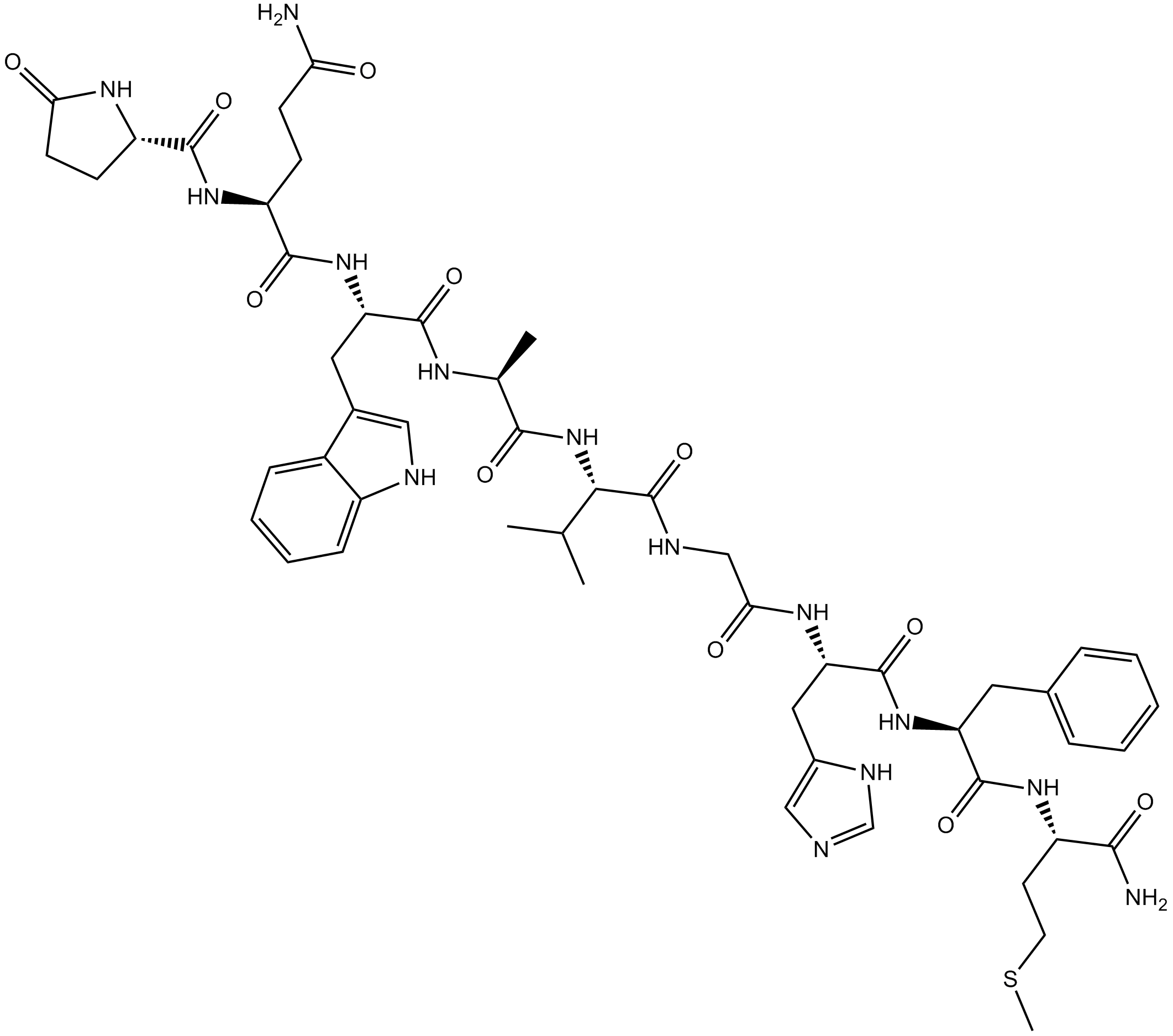 B5230 LitorinSummary: Amphibian bombesin-like peptide
B5230 LitorinSummary: Amphibian bombesin-like peptide -
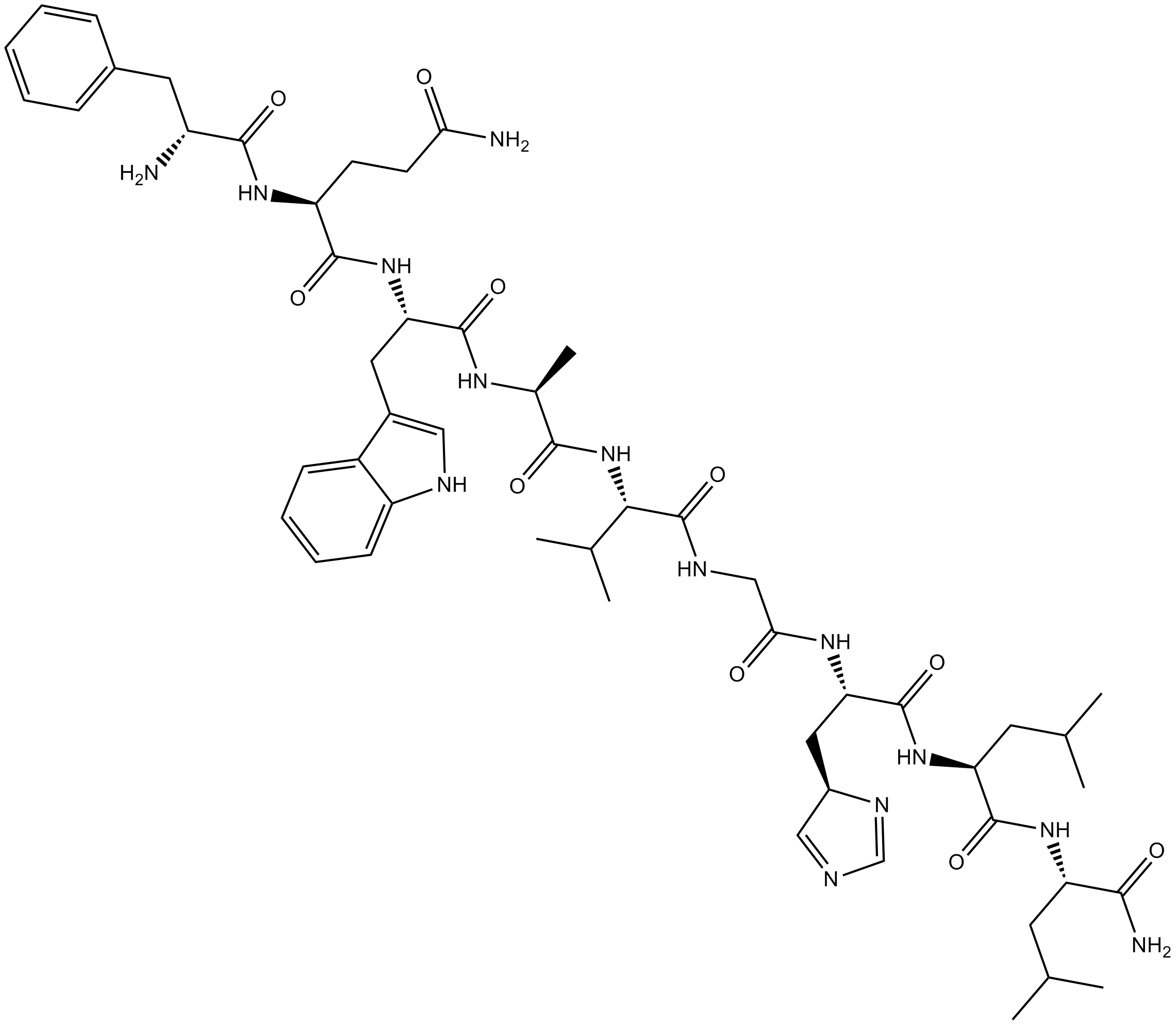 B5330 BIM 187Summary: Bombesin/GRP receptor agonist
B5330 BIM 187Summary: Bombesin/GRP receptor agonist -
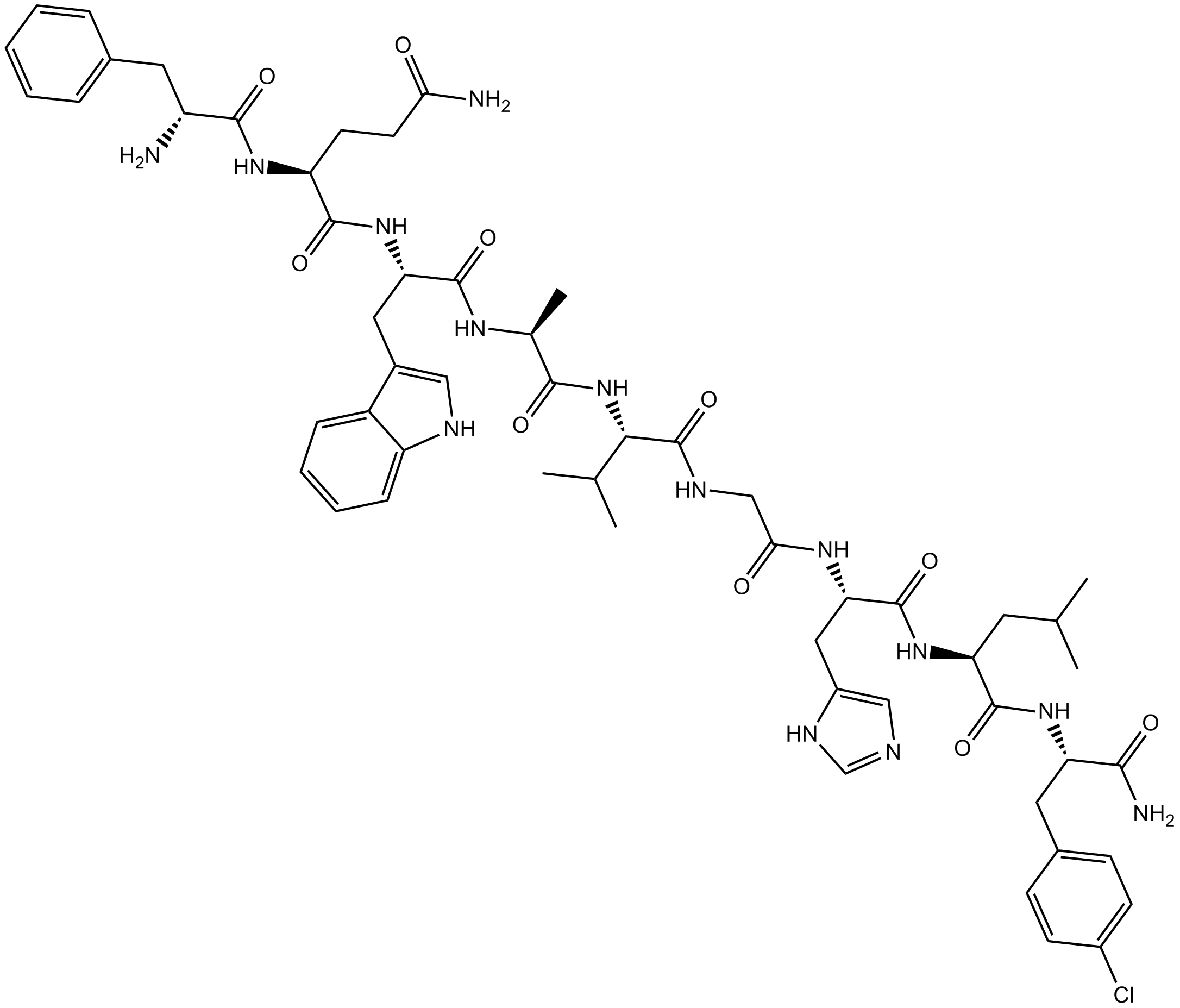 B5331 BIM 189Summary: Bombesin antagonist
B5331 BIM 189Summary: Bombesin antagonist

